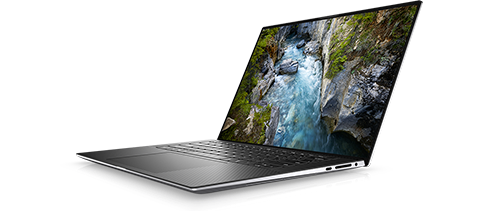Review of the Dell Precision 5550 with Ubuntu Linux
Context
This review is written after having used the Dell Precision 5550 with Ubuntu 20.04 LTS for two full years. Work use is as a lecturer in programming and numerical simulations in physics.


Conclusion
To jump to the conclusion: The computer is poorly composed computer with a lot of muscle. It is not well suited for Ubuntu Linux and probably not for Linux in general.
Grade: 1.0/5.0. - Never ever Dell and Linux again!
Main specs
- Intel i7, 6-core/12-thread
- 32 GB RAM
- 3840x2160 pixel resolution
Pros
- The compter specs are fantasic, and the computer has a lot of muscle.
- The keyboard is great. Smooth, large keys, with a nice going
- The look is great! Brushed aluminum - nice!
- The computer has space for two harddrives. This combined with a BIOS-based boot-menu, makes it possible to install two different OS'es on two physical drives, without being dependent on the boot menu of one OS (e.g. Linux) to lanuch an other OS (e.g. Windows).
Cons
Sorted by severty:- The computer is unable to suspend properly. It will consume 10-15 % battery in 'suspend'-mode. Essentially the computer only turns of the screen and the wifi during suspend, redering the suspend mode useless. A workaroud is to hack a unsupported hibernate solution. See below.
- The mousepad is terrible. It will jump around, freeze for seconds or minutes at a time, or be activated during typing, as the palm lightly touches it.
- The weight! It is close to 3 full kg's! Heavy as ****
- The screen resolution is very high, and since I am only equipped with standard human eyes, I have had to reduce the resolution to half (1920x1080), in order to be able to make sensible use of the computer. Especially during boot of the Linux system, the output and boot menu are unreadable due to the high resolution.
- It has touch screen - one should think that this is a good thing, but the touch screen device driver becomes dysfunctional from time to time (a couple of times per week). This will mess with several systems, but mainly Java-based programs, as LibreOffice suffer! See below for workaround.
- The battery life while working is short! - approx. 2 hour while working.
Setups and Workarounds
Mouse drag lock bug
Symptom: The mouse gets suck in a drag lock mode. Every object clicked on, will be dragged around.
Workaround: Working: Open a terminal and type xinput for a list of devices. Then xinput disable
This seems to work: “...works for me on Ubuntu 20.04. I need to read off the touchscreen ID from the output of "xinput". After that, I disable the touchscreen, and enable it again after I swipe gently on the screen. …” from post #47 on this post on launchpad.net.
Changing resolution in GRUB
Symptom: Due to the high resolution of the screen the GRUB boot menu during boot, is extermely difficult to read and use.
Workaround:
To do this safely requires two steps.
Step 1: find the preferred mode
Reboot and press and hold Shift to display your grub. Press C to enter console mode. Then type (for Ubuntu versions before 18.04):
$ vbeinfo
For Ubuntu 18.04 and later:
$ videoinfo
This will display various stuff how grub recognizes your display. At the bottom is "preferred mode" - in your case it should say 1280x800. Note down the value.
Note: sometimes, some buggy video cards incorrectly give Grub the wrong preferred resolution - if the preferred mode is much higher than you were expecting, then select the nearest mode in the list displayed that you were expecting.
Press Esc to return to grub and press Enter to boot.
Step 2: Setting the resolution in grub
Reach for your terminal and type
$ sudo nano /etc/default/grub
find the line
#GRUB_GFXMODE=640x480
remove the # and change 640x480 with the preferred mode you wrote down. E.g.:
GRUB_GFXMODE=1280x800
save, then type
$ sudo update-grub
Note: the preferred mode has to be among those listed by vbeinfo. For example, if your preferred mode is 1920x1080 (a common 16x9 aspect ratio setting), your preferred mode is NOT supported by vbeinfo and may not work correctly. In fact, there do not seem to be any 16x9 modes supported by vbeinfo, as of Ubuntu 13.04. In that case you could try falling back to something common like 640x480, which, it seems most monitors support and vbeinfo supports. Also, not all the modes supported by vbeinfo are necessarily supported by your monitor and you may have to experiment.
These instructions are from this post on askubuntu.com, I use dthe the resolution 1600x1200.